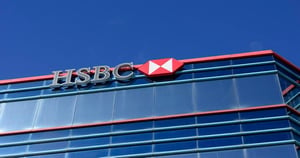Burberry Group PLC (LSE: BRBY.L), a stalwart in the luxury goods industry, finds itself in an intriguing position as it navigates the challenges and opportunities within the global market. As a quintessential British brand, Burberry has long been synonymous with high-quality fashion and luxury, yet its current financial metrics paint a complex picture for investors keen to understand its trajectory.
As of the latest trading data, Burberry’s stock is priced at 1054 GBp, marking a modest 0.01% change from previous levels. Notably, the company’s 52-week price range spans from 571.00 to 1,235.00 GBp, suggesting significant volatility over the past year. Such fluctuations are not uncommon in the consumer cyclical sector, particularly within luxury goods, where market dynamics can shift rapidly based on consumer sentiment and global economic conditions.
The company’s market capitalisation stands at $3.79 billion. However, Burberry’s valuation metrics present an interesting scenario; the forward P/E ratio is a staggering 2,689.05, which appears exceptionally high and may indicate market expectations of future earnings growth or reflect current earnings challenges. The absence of a trailing P/E ratio and other key valuation metrics like the PEG and Price/Book ratios suggests a period of adjustment or transition for the company.
Burberry’s performance metrics indicate some areas of concern. The company has experienced a revenue decline of 12.50%, and its earnings per share (EPS) is -0.21, highlighting recent profitability challenges. The negative return on equity of -7.23% further underscores the need for strategic initiatives to bolster financial performance. Despite these hurdles, Burberry has maintained a healthy free cash flow of £328.5 million, offering some reassurance to investors regarding its liquidity and operational efficiency.
Dividend investors may find Burberry’s current yield situation less appealing, given that the dividend yield is not applicable and the payout ratio is an unsustainable 559.63%. This could imply a reassessment of dividend policies or a shift in capital allocation priorities to support business growth and restructuring efforts.
The sentiment among analysts is mixed, with 7 buy ratings, 9 hold ratings, and 3 sell ratings. The average target price of 1,025.79 GBp suggests a slight downside of -2.68% from the current price. This reflects cautious optimism tempered by the challenges ahead, as analysts weigh the brand’s potential for recovery and growth against ongoing market pressures.
Technically speaking, Burberry’s stock is trading above its 50-day moving average of 811.09 GBp but below the 200-day moving average of 859.41 GBp, indicating a short-term bullish trend amidst a longer-term bearish environment. The RSI (14) at 45.51 suggests the stock is neither overbought nor oversold, while the MACD and signal line dynamics point towards a potentially upward momentum in the near term.
With a storied history dating back to 1856, Burberry’s brand equity remains a formidable asset. The company’s global reach across the Asia Pacific, Europe, the Middle East, India, Africa, and the Americas provides a broad platform for growth. As Burberry continues to capitalise on its heritage and innovate within the luxury space, investors will be keenly observing how the company addresses current challenges and harnesses opportunities to drive future success.
For those considering an investment in Burberry Group PLC, the current landscape offers both risks and potential rewards. The brand’s enduring appeal, coupled with strategic adjustments, could pave the way for a turnaround. However, a thorough analysis of financial health, market conditions, and strategic direction is essential for informed decision-making in this dynamic sector.




































